 —— FEW FACTS & A LOT OF FIGURING ——
—— FEW FACTS & A LOT OF FIGURING ——
Fashion of the Old West is based on (in this order): real articles of clothing, photographs, portraits, paintings by Western artists, sketches, journals such as explorers or land records, obituaries, diaries, newspapers, magazines, notes in Bibles property ownership records, word of mouth, stories, & legends. Some, like the record of how many dresses a woman left in her will, are accurate. Others, like the story handed down by your great-grandmother or the story of Calamity Jane & General Custer, have to be interpreted.
Design & depiction of fashion of Western America fashion must put all those odds & ends together, along with what is known about influences, environment, availability, attitudes, culture, values, & assumptions about the person or people being studied & depicted. There are whole professions, notably Anthropology, which study these factors. Yet other professionals such as Museum Curators spend whole lifetimes gathering & studying the clues of fashion.
For our purposes for depiction, we must trust the research of those professionals, & draw the best conclusions we can based on which facts are known, but add Grandma’s stories to breathe life into our depictions. Our projects will assume fashion for depiction is based on one of the factors below.

A) Fashion and/or the concept of fashion of the day was physically carried from the east coast (originating from the same influences as Easterners), & then modified or adapted to suit the culture, time, place, or activity;
This starts with the assumption whatever the current trend of the east is being carried west, & will focus on those factors which would cause them to be modified; e.g. materials, patterns, or communication unavailable;
It means fashion will almost always be 1 or 2 years out of style compared to the east;
Designs based on this assumption will end up being modifications of whatever was in style in the east a couple of years prior to the depiction.
B) Clothing was origined out of local materials; e.g. furs, leathers, & therefore based on the same influences as men’s fashion such as evolution of the cowboy ensemble, almost strictly for function;
These projects will be researched & developed per project by specific region, working with our subcontractors who specialize in indigenous materials;
The American Cowgirl in particular demands research into male clothing & its adaptation for women.
C) Fashion design & clothing was a combination of above; e.g. western innovations like denim jeans which arise out of functional need; yet using modern technology of fabric, dye, & production that comes from the east which combines local availability of fur, skin, or locally made fabrics or materials (such as spun or woven yarn) with those of mass production or import;
This will be the result of very specific character of research, since it combines extensive historical data as to fashion of the day PLUS the specific geographic region including all aspects of the time & place;
It cannot be generalized.
D) Design & construction of garments comes of native, ancient civilization inspiration, influence, or actual use;
Silhouettes intentionally choses not to develop “D”, as the world of ancient & Indian cultures is vast & complex, & can take a lifetime, although influences of such will be considered with characters where that is pertinent.
—— THE ERA IN BRIEF ——
Women of the American Old West had to be resourceful to cope with the elements that surrounded them: the harsh conditions, lawlessness, & living in an age where there were few amenities. Some women took to the gun as readily as any man, while others made lives for themselves apart from dignified society. But for women who made the trek west with their families, their lot was in raising children, running a household (that included food processing, candle & soap making, spinning, weaving, knitting, etc.), establishing schools & churches, & occasionally, warding off Indian attacks. Some were deeply involved in human & voting rights (the suffragette movement).
Design & depiction of fashion of Western America fashion must put all those odds & ends together, along with what is known about influences, environment, availability, attitudes, culture, values, & assumptions about the person or people being studied & depicted. There are whole professions, notably Anthropology, which study these factors. Yet other professionals such as Museum Curators spend whole lifetimes gathering & studying the clues of fashion.
For our purposes for depiction, we must trust the research of those professionals, & draw the best conclusions we can based on which facts are known, but add Grandma’s stories to breathe life into our depictions. Our projects will assume fashion for depiction is based on one of the factors below.
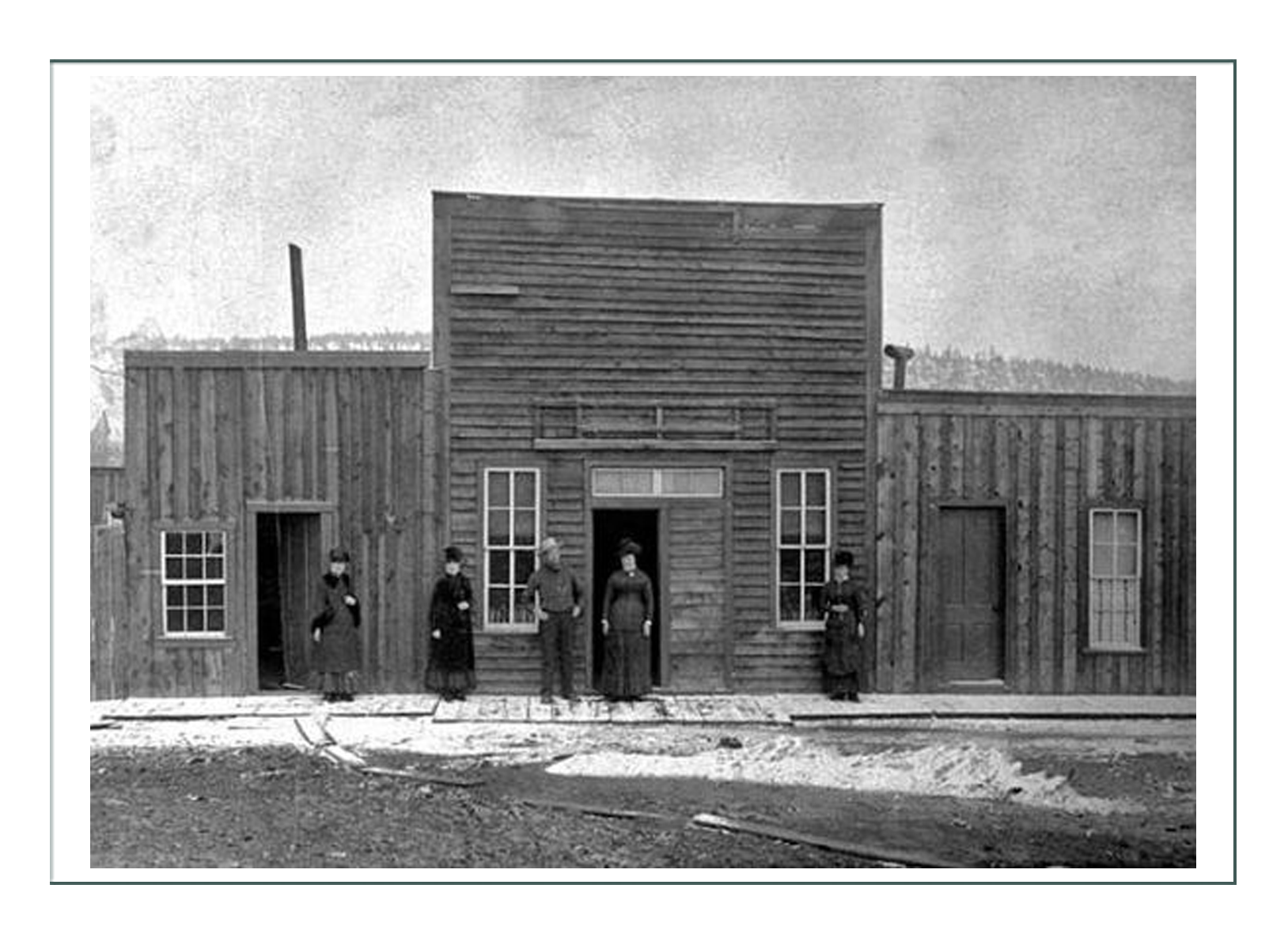

—— INTERESTING FACTS ABOUT THE OLD WEST ——
- Public performers such as singers, dancers, & sharpshooters could appear in short or split pants in the 1800’s, but it was indecent for any other women to do so
- Since there were not fashion magazines, people could only guess what was going on in the American west
- No one knew if American women created their own fashion trends, or carried those from the East
- Most women in the west were typically 2 years behind in fashion
- It was assumed Western prostitutes were dressmakers by day, and plied their trade at night
- The Stetson high crowned wide-brimmed felt hat nicknamed “The Boss of the Plains” was American born in 1876. Available in black or white so you could pick if you wanted to be the good guy or the bad guy these were worn by cowboys and cowgirls. They cost $20, about what a good cowhand earned in a month at the time
- Women wore denim jeans just like the men did in the West
 THIS CHARACTER THIS FASHION ERA – SMALL BUSTLE TO NO BUSTLE TO BUSTLE AGAIN
THIS CHARACTER THIS FASHION ERA – SMALL BUSTLE TO NO BUSTLE TO BUSTLE AGAIN
We have intentionally selected 1882-3, because the “fishtail” bustle era had just ended, and it was a short period of simple draping over the rear end with no bustle before the large “horse hind” bustle would take over late 1884.
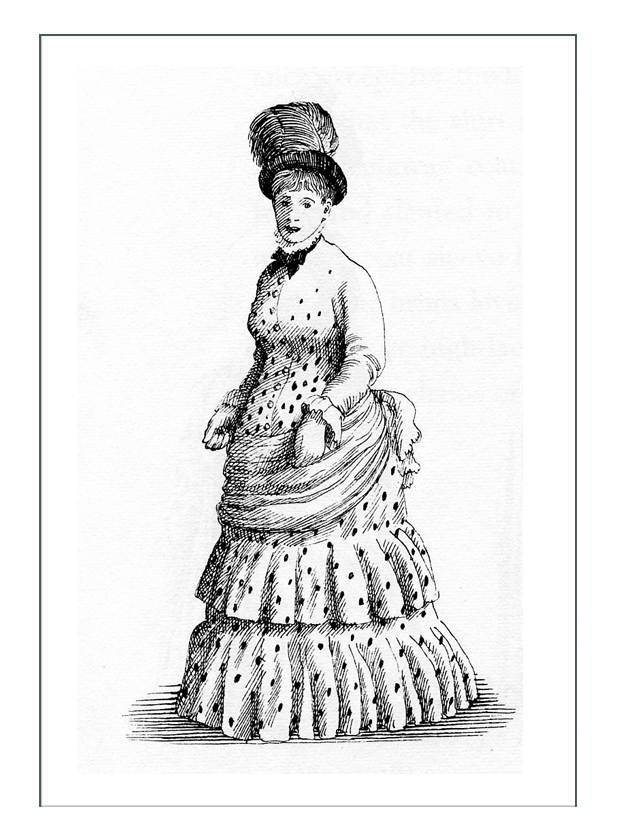
MULTIPLE FUNCTION ADVANTAGE:
The other advantage of the era is that a very inexpensive, plain cotton 1 or 2 piece dress was worn for daily use AND for dress up. Draping methods in 1883 were numerous and anything from a simple roughed over apron to elaborate folds & bows in the back were acceptable. This means one dress could have several different drapes to serve different needs & still be completely historically correct.
Bodices could be 2 piece with inserts or chemisettes instead of full blouses, which allows flexibility in the costuming, & ability to clean just worn inserts the same as they would have at the time, while leaving the main garment unwashed.
Using interchangeable aprons, skirt overdrapes, collars, cuffs, & petticoats allow the interpreter to use the same basic gown for 2-3 different interpretations, and to keep the cost down for the initial purchase, while adding pieces as desired as time goes on and more interpretation ideas are thought up. Hot summers, wind, and cold snowy winters would need two garments per woman plus 1 dress up.
Basic garments need to be very simple and uncharacteristically plain for the era. Typical at the time were extremes in use of trims, ruffles, fringe, etc. These people would have been much more efficient in use of their clothing than those to the east.
Economy would mean wearing the same bodice and changing the skirt by function (e.g. split skirt for riding, but long dress with overskirt for dress up). Accessories and especially sentimental jewelry hats and bonnets would be key to changing for activity and keeping up with style. Small accessories would have been imported, but hats and bonnets most likely locally made.
Footwear, though not in general fashion, would be tie up the front ankle high boots with a flat to 1″ heel, cotton stockings over the knee or held with garters to keep the corset down and the stockings up.
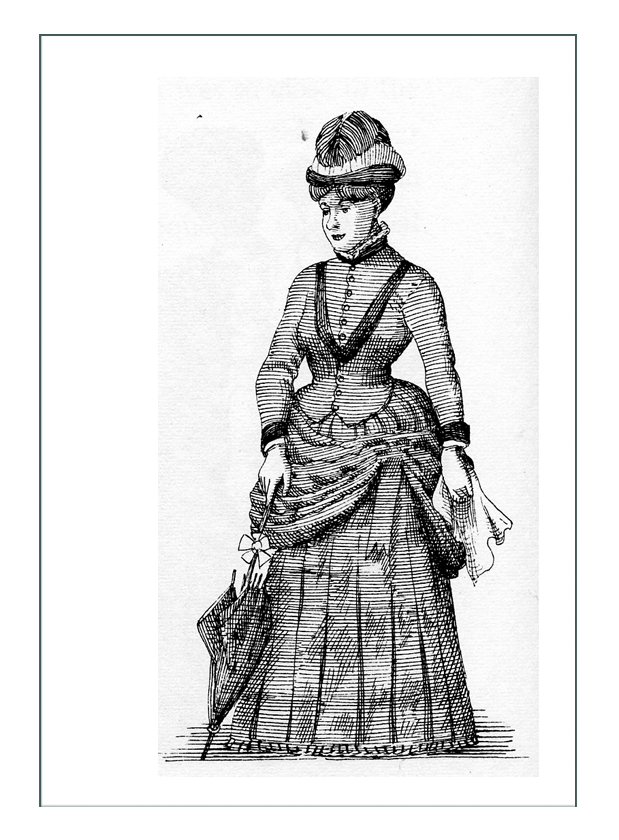
RECOMMENDED USE OF HISTORICAL & NATURAL MATERIALS
Using plain (unembroidered or detailed) fabrics of the era and simple patterns also allows us to make the garment fast to meet tight deadlines. Use of cottons also allows under or over dress for the weather. Please note it is our goal in this business to give the wearer the most authentic experience as possible. This means everything from undergarments up need to be of the same material, design, cut, and method of wearing that would have been in 1883.
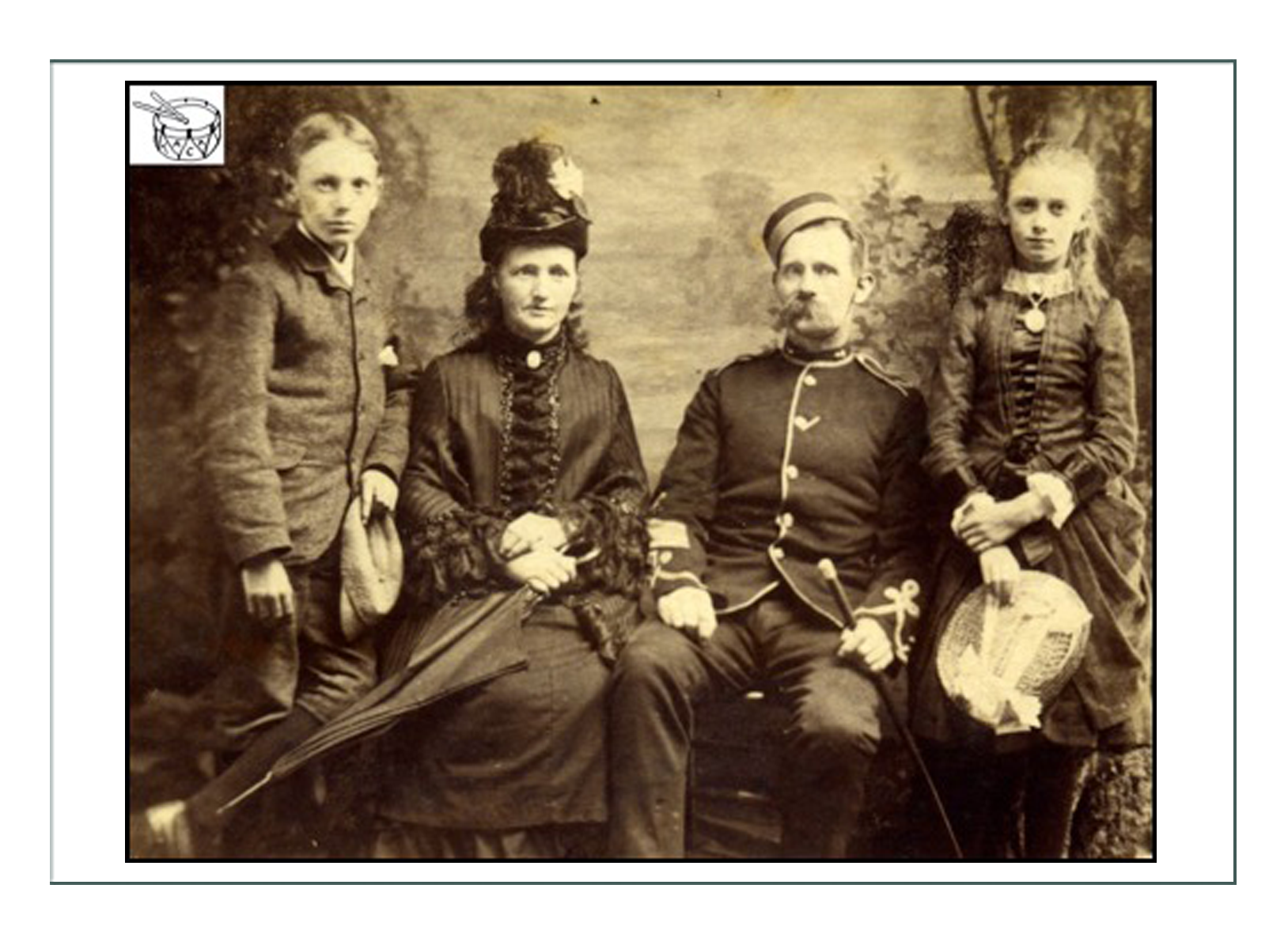
For that reason, we recommend taking the time and cost to do the authentic corset, although we are quoting a theatrical corset to save time and money. While our corsets are designed for the modern body, and do not attempt to shape the body as they would have at the time, the authentic corsets are made of natural fabrics which breath and react to conditions and weather.
SOME SYNTHETICS
Theatrical means “non-authentic” materials & construction. If theatrical is selected, it will be made of polyester/cotton with metal powder coated and/or plastic boning. Because these will not give authentic feeling, we recommend selecting all historic garments.
Some pre-made ruffles and ribbons may be of synthetic materials due to the prohibitive cost of silk and embroidery and the time required for hand detailing, although the latter is available on request. 100% cotton or silk thread will be used for all hand stitching. This era was machine sewn including mass produced trims and details. Machine sewing and embroidery will use polyester thread for durability.
 —— EXAMPLES OF WESTERN FASHION & LIFESTYLES 1840-1890 ——
—— EXAMPLES OF WESTERN FASHION & LIFESTYLES 1840-1890 ——
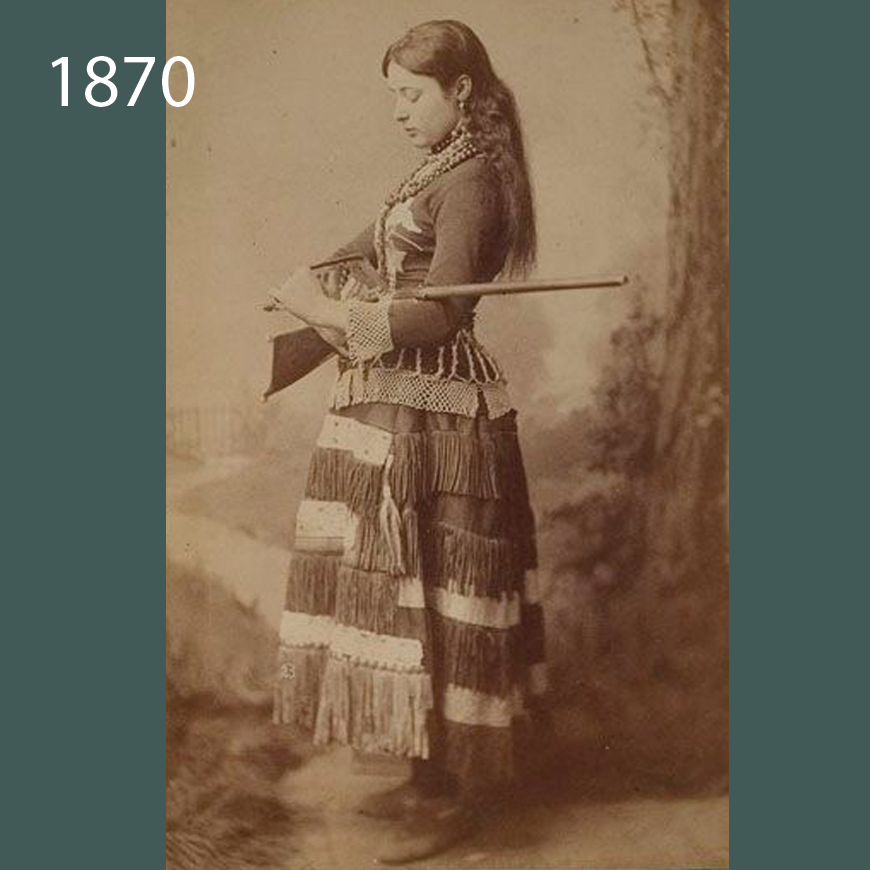
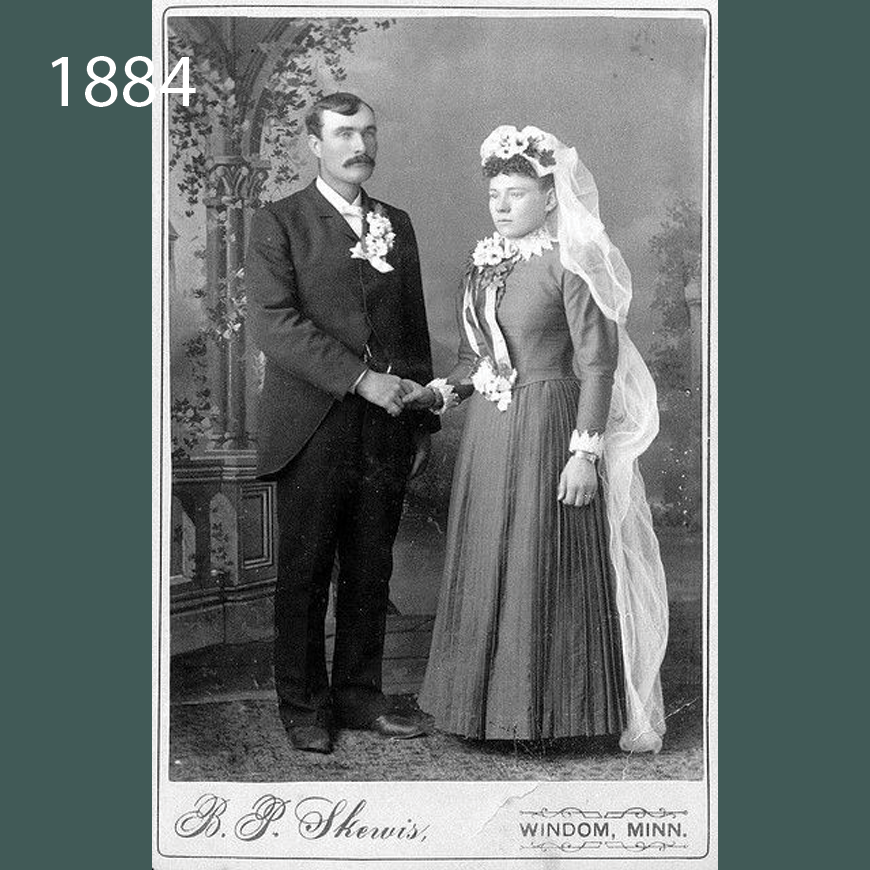
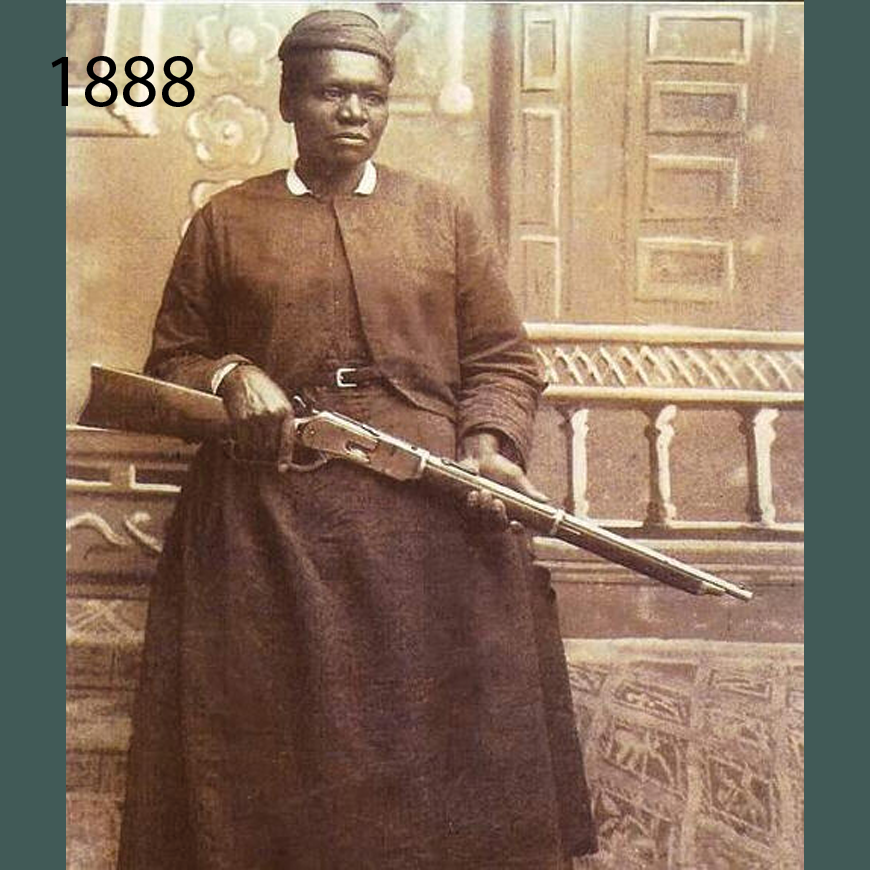
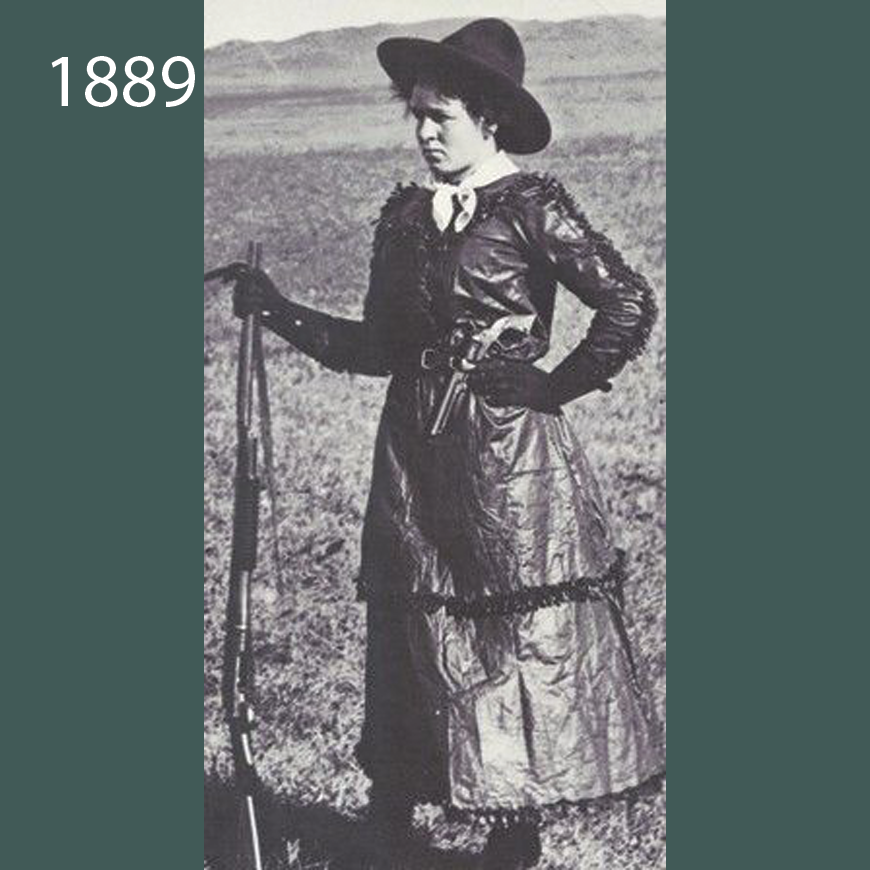

—— WYOMING WOMEN OF INFLUENCE 1870 – 1890——
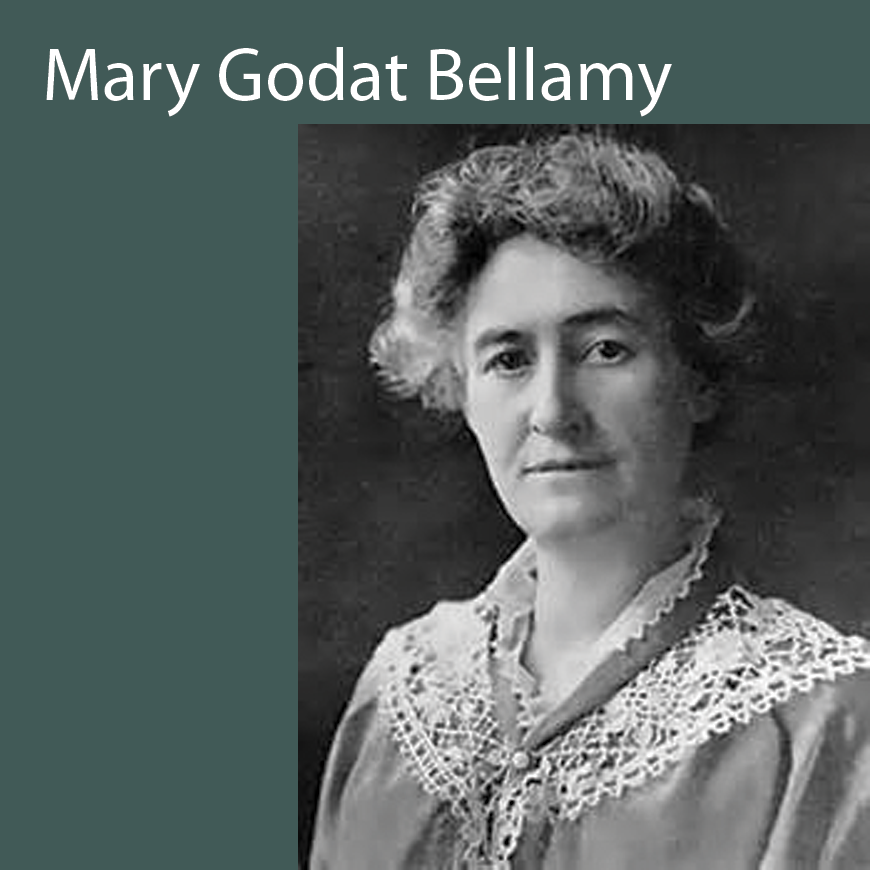
- Mary Godat Bellamy: a resident of Laramie, was the first woman elected to the Wyoming State Legislature. A school teacher by profession, she was married to Charles Bellamy who was the first licensed professional engineer in the United States. Together with her husband, Mary supervised many surveys of the northern Rocky Mountains including a lake in the Snowy Range which he named Lake Marie in 1879 in honor of his wife.
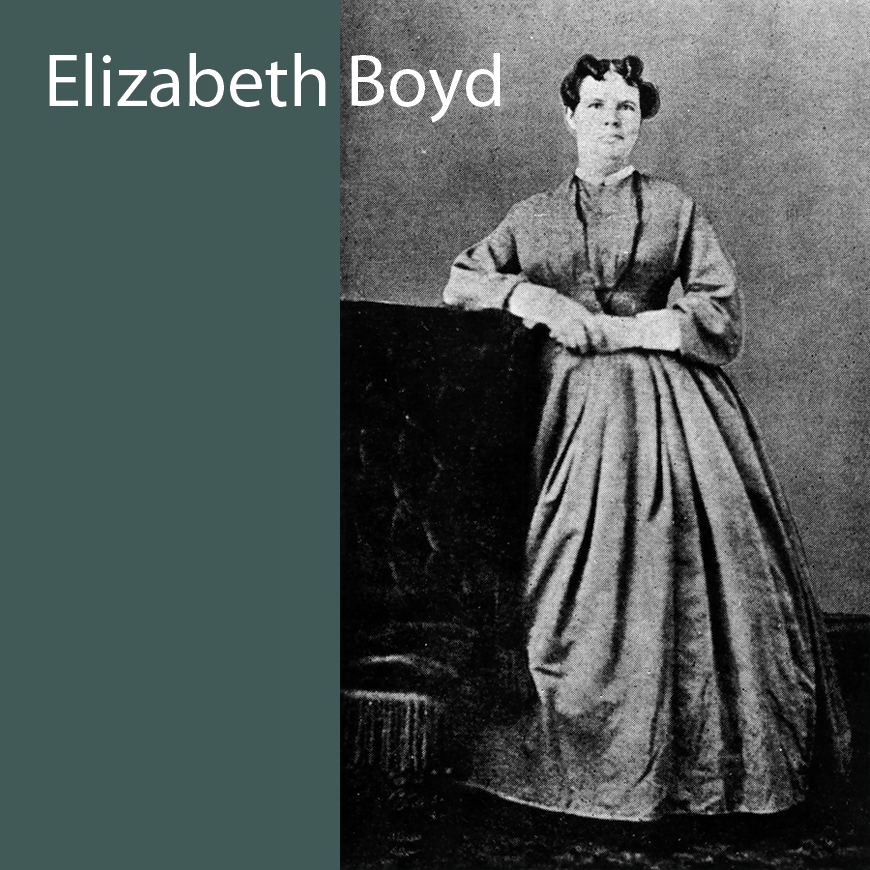
- Elizabeth Stewart Boyd: the first school teacher in Wyoming, & later the founder of Laramie’s first library, was called up from the voter rolls in 1870 to become the very first woman to serve on a jury.
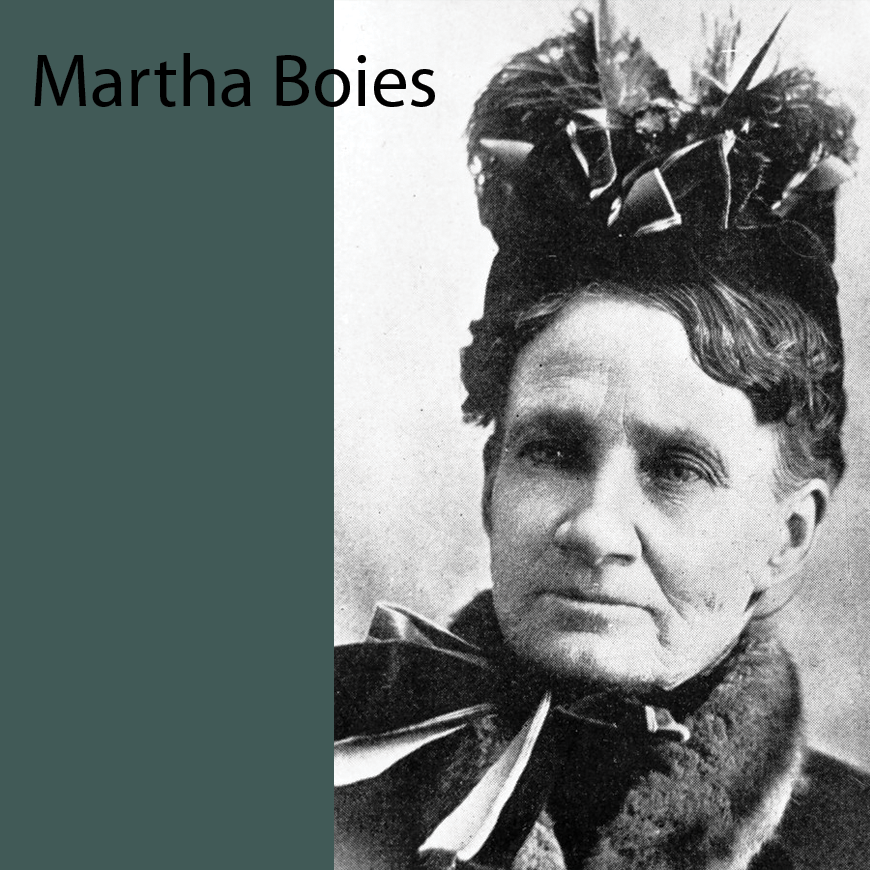
- Martha Symons Boies: arrived in Wyoming 1868 in a horse cart with her children in tow. She was appointed the first ever female bailiff in 1870 because the first ever women were serving on juries. Only a woman was permitted to guard female jurors at their hotel & to escort them to the necessary; making only a woman eligible as bailiff.
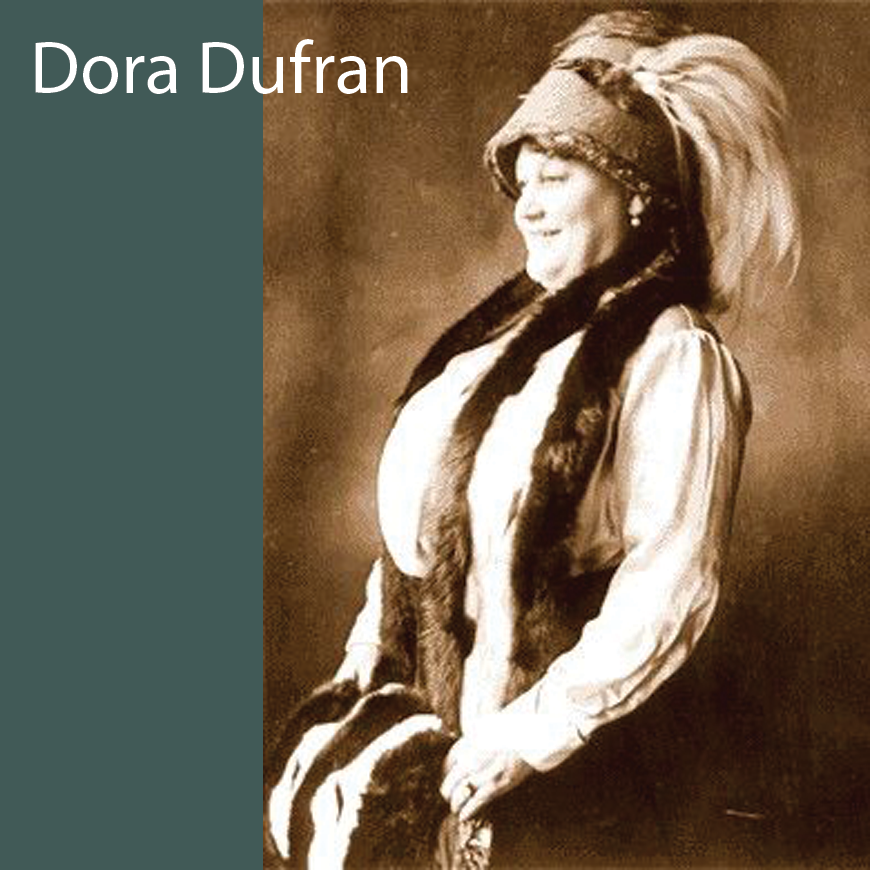
- Dora DuFran (aka “Amy Helen Bolshaw”): was born in England & came to America around 1869 to settle in New Jersey. She was extremely good looking & became a prostitute at age 13-14. soon after she became a dance hall girl, calling herself Amy Helen Bolshaw. When the gold rush hit, “Amy” moved to Deadwood, South Dakota at age 15 & promoted herself as a Madame & began operating a brothel. She preferred to have very pretty girls work for her, but the selection in the west was very limited, so she satisfied herself that her girls were clean & healthy & demanded they practice good hygiene & dress well.
Dora (now called “Dora” again) picked up several girls who arrived in Deadwood via a wagon train led by Charlie Utter. Dora is credited with coining the term “cathouse” after Charlie brought her a wagon of cats for her brothel to clean up the mice.
Calamity Jane worked for her (“Martha Jane Burke”); her main competition was a deadwood Madame Mollie Johnson. She had several brothels over the years; most popular being “Diddlin’ Dora’s” in Belle Fource, SD which advertised itself as the “Three D’s – Dining, Drinking, & Dancing – a place where you can bring your mother”. Cowboys who visited the place responded by stating “I wouldn’t want my mother to know I had ever been there.”
Dora’s other brothels were in Lead, Miles City, & Sturgis SD or MT. She was a successful brother owner until the day she died.
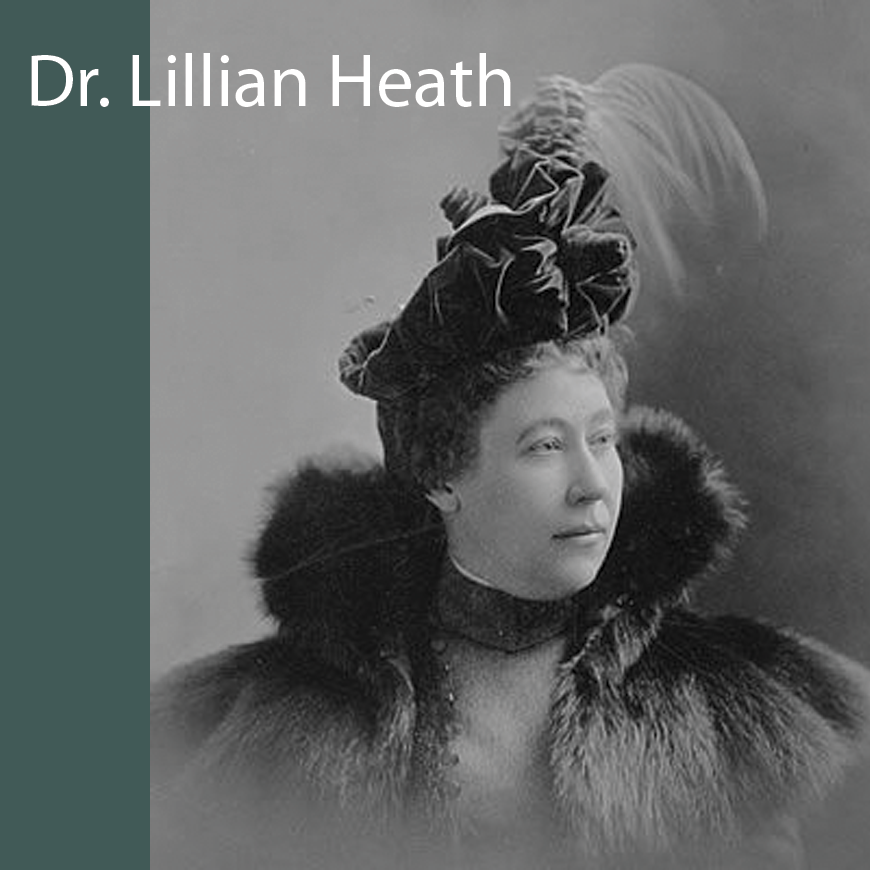
- Dr. Lillian Heath: 1 of 3 of the first women to graduate from medical school in 1893. She became the first physician in Wyoming, & set up a practice in Rawlins from 1893 to her retirement in 1909. In 1878, Dr Heath watched the eclipse alongside Thomas Edison.
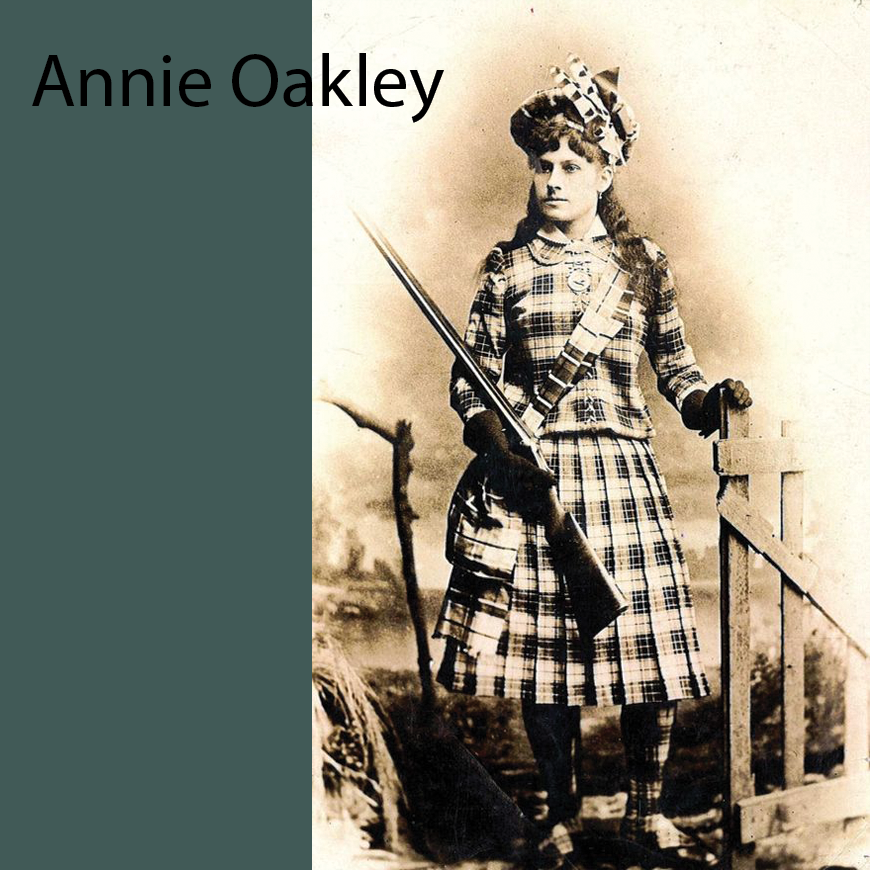
- Phoebe Moses “Annie Oakley”: helped her Ohio family in the 1860’s survive by hunting & selling game & wild animals. Though she learned to use a rifle for practical reasons, she eventually became a skilled competition sharpshooter. She met her husband, Frank Butler, in a shooting contest. Legend has it she won the match with 25 out of 25 shots, to his 24.
Together, Frank Butler & Annie Oakley created a show & traveled around the country giving shooting demonstrations, even joining the circus as “champion rifle shots.” The husband & wife team joined Buffalo Bill’s Wild West show in 1885 & toured with Bill Cody for 16 years. The Wild West show was a celebration of the “Old West” which included skits of stage robberies, gunfights, & military exhibitions.
Though most heroes of the “Wild West” were men, Buffalo Bill’s show highlighted Annie Oakley’s abilities, & she became one of the most famous women of the West. Her nickname, “Little Sure Shot”, was given to her by Chief Sitting Bull who was so amazed by her skills.Annie was severely injured in 1901 when the train that carried the Wild West show collided with another & she became partially paralyzed. She performed again but not as the same Annie. She died in 1926, a few years after an auto accident from which she never regained her health.
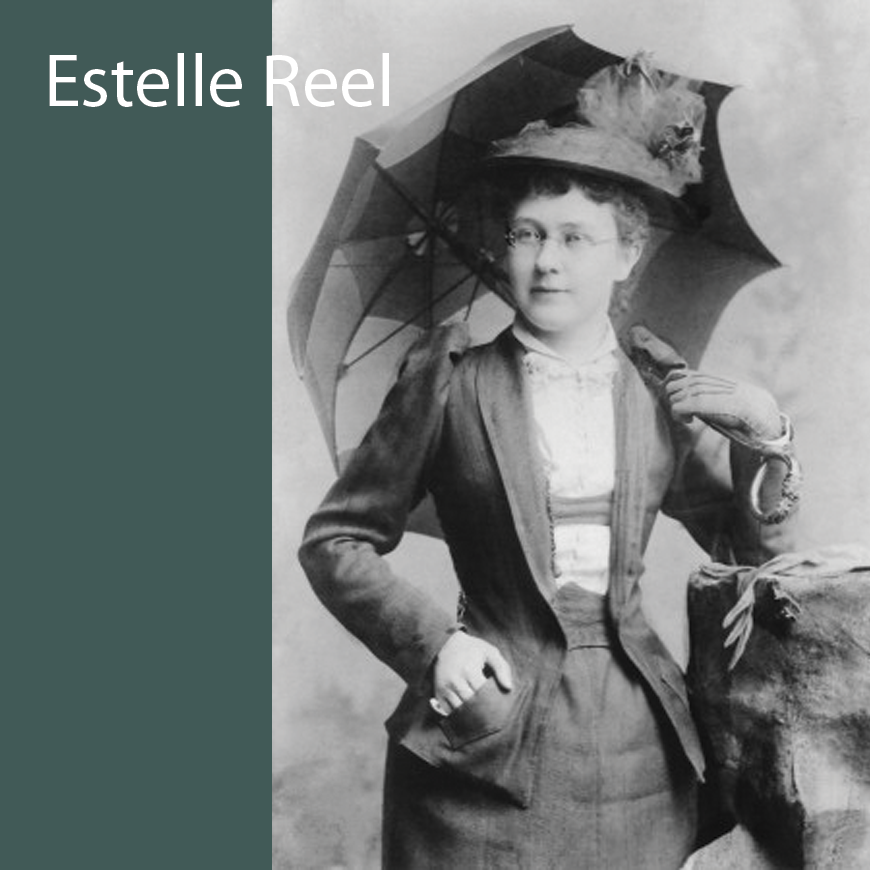
- Estelle Reel: first woman to hold public office as the Superintendant of Education of Wyoming.
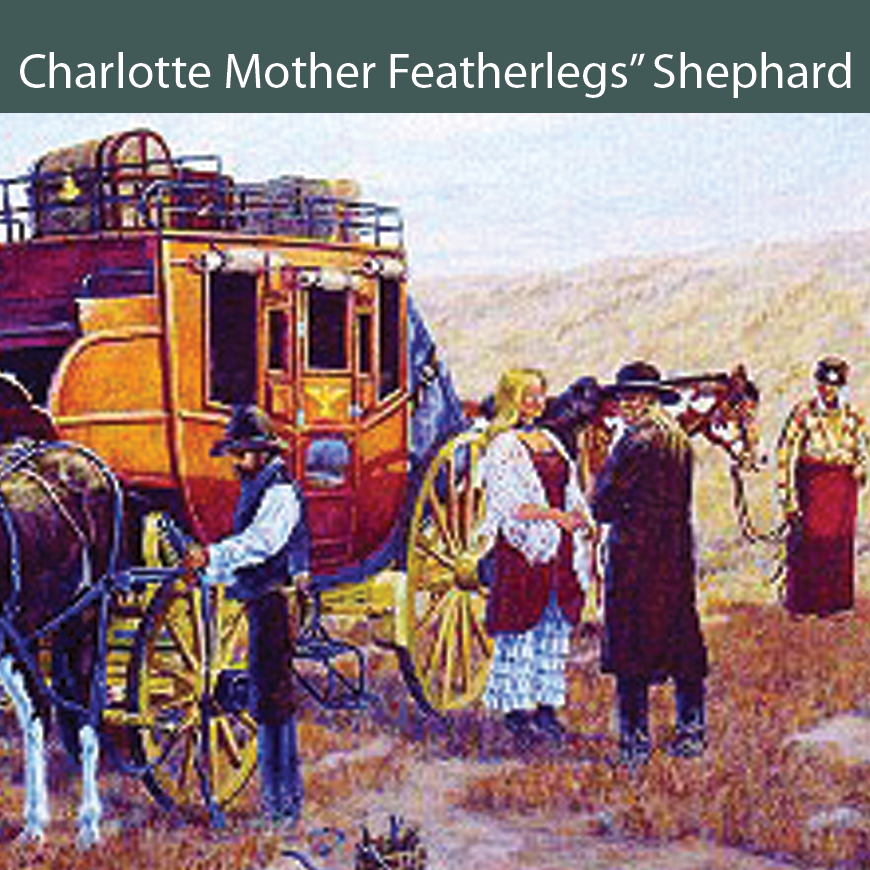
- Charlotte “Mother Featherlegs” Shephard: ran a roadhouse bordello on the Deadwood Trail near Lusk, Wyoming. She provided whiskey & comfort to travelers on their way to the Black Hills gold fields around 1876, & associated with dangerous outlaws. Partnered with one such man who eventually shot her dead on the trail, she was known for riding astride a horse at full speed across the prairie with the ruffles from her red pantalettes flying in the wind so that she looked like she had chicken feathers.
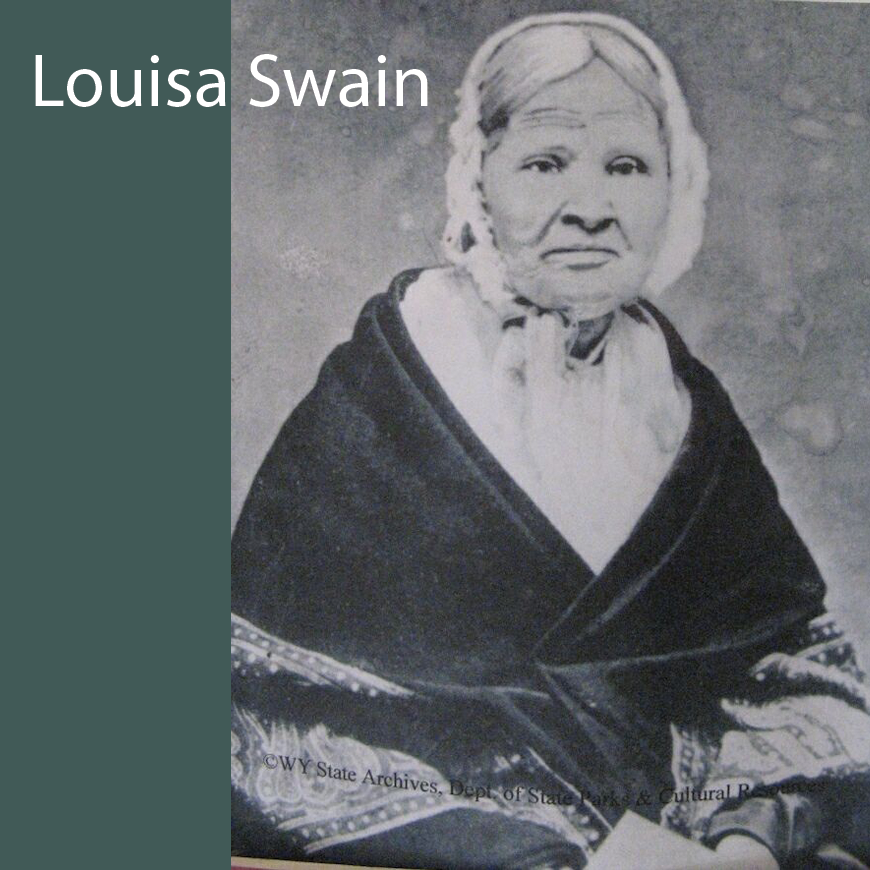
- Louisa Gardner Swain: arose early on September 6, 1870, put on her apron shawl & bonnet, & walked downtown with a tin pail with intent to purchase yeast from a merchant. She walked past the polling place & decided right then that she would vote as long as she was there.
The polling place had not yet officially opened, but election officials invited her to come in & cast her ballot. On this day, Louisa, a 69 year old “gentle, white-haired housewife Quakerish in appearance” according to the newspapers, cast the very first ballot in the United States under laws giving women full equality to men.
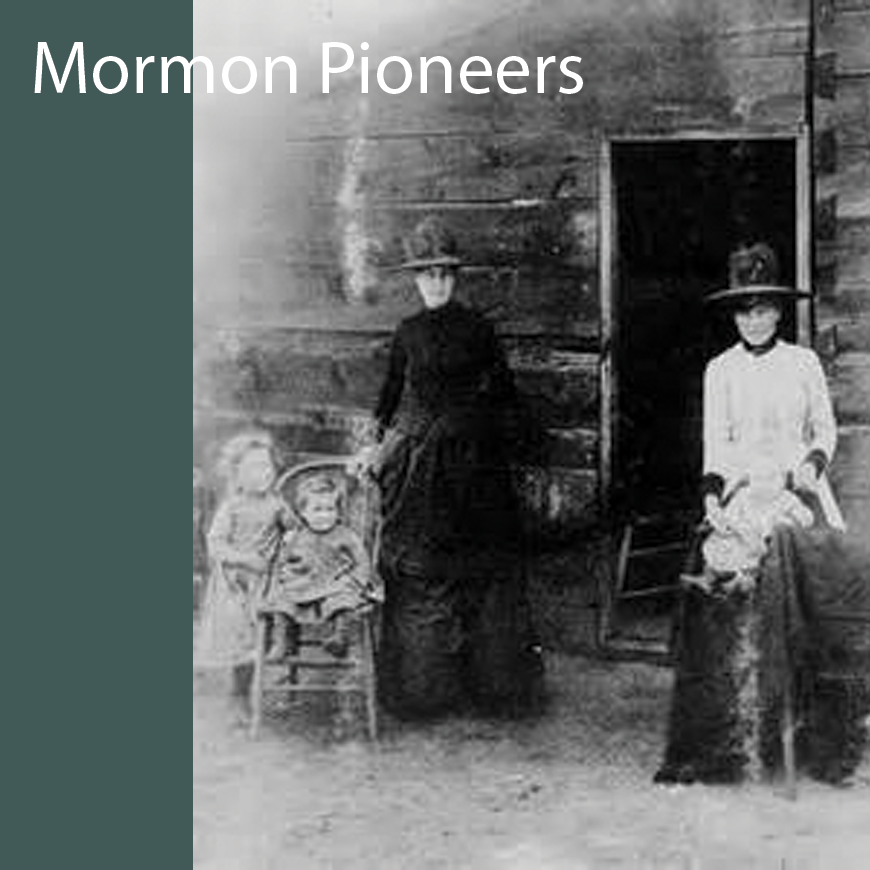
- Mormon Immigrants: pioneers on the east to west “Mormon Trail” hundreds of thousands crossed the country in the 1870’s-1880’s to eventual destination Salt Lake City, Utah, to establish a new society. Along the way, they stopped to establish communities & recorded landmarks & histories for those who would follow (the interstate highway now roughly follows the Mormon, Oregon, & other trails through the West)

—— REAL LIFE WOMEN & REAL GARMENTS —
— REPRESENTATIVE WESTERN FASHION ENSEMBLES 1870-1890 ——

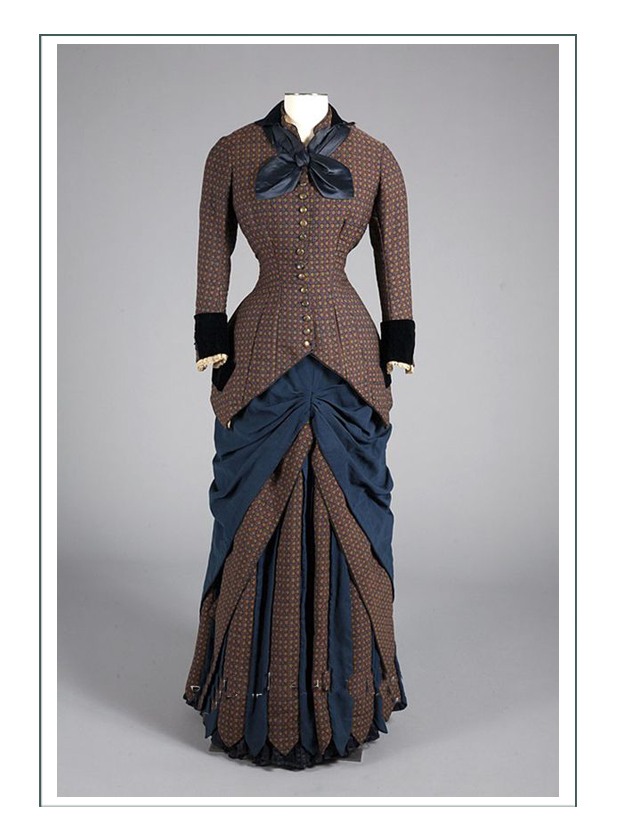
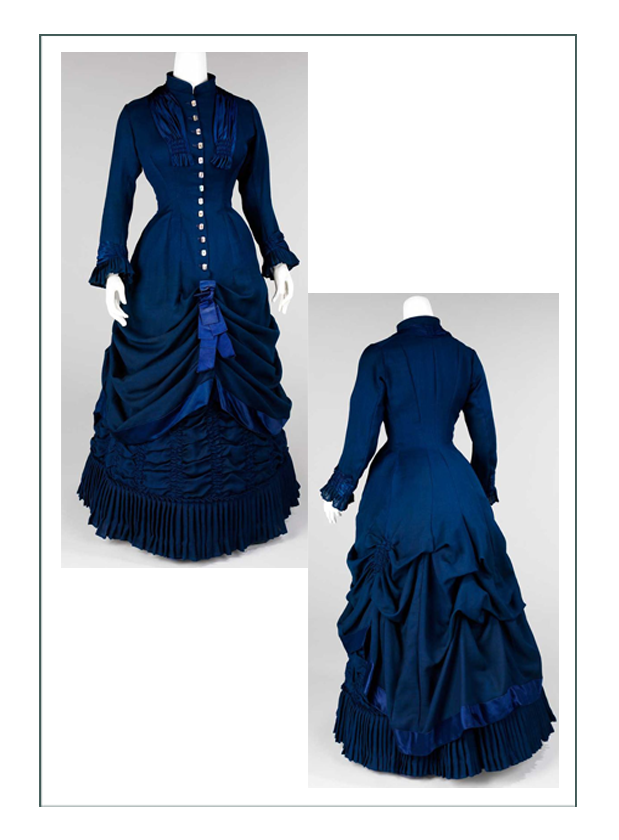
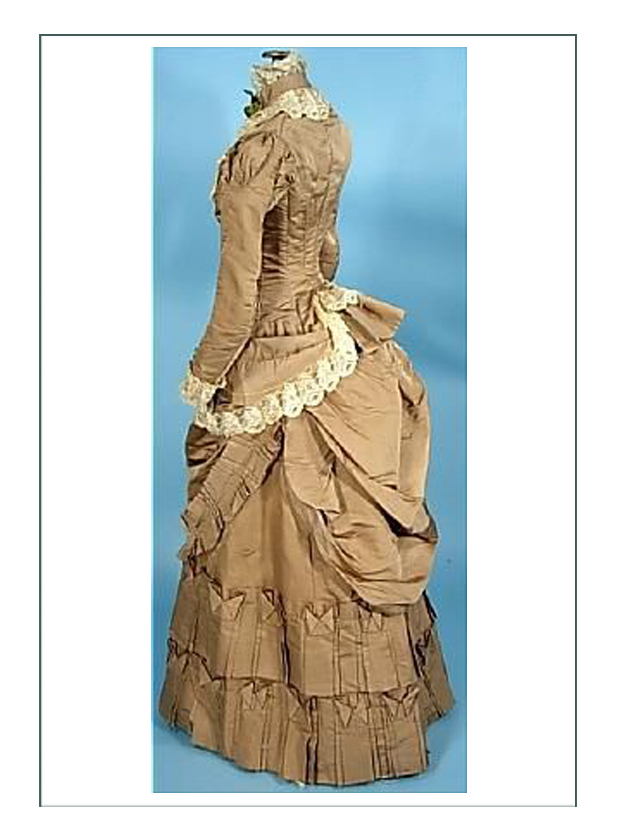
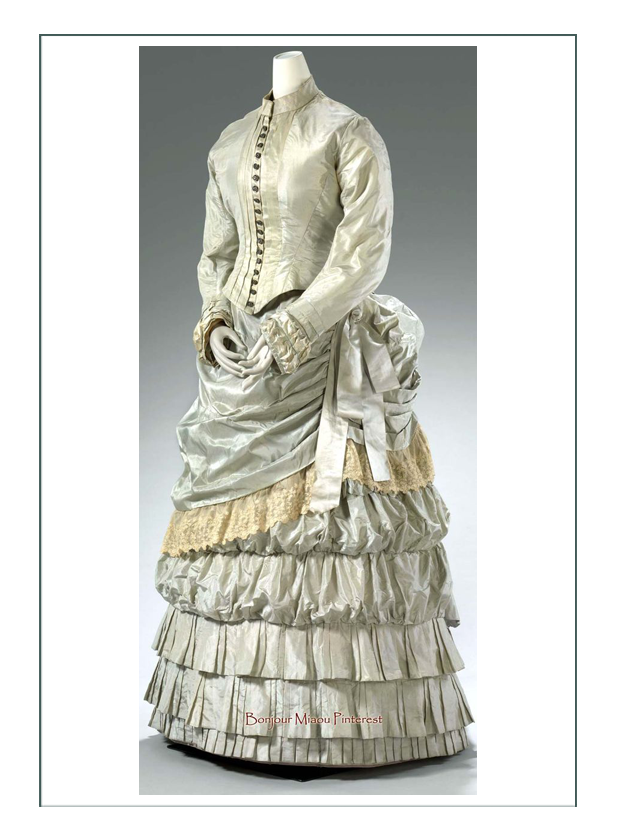
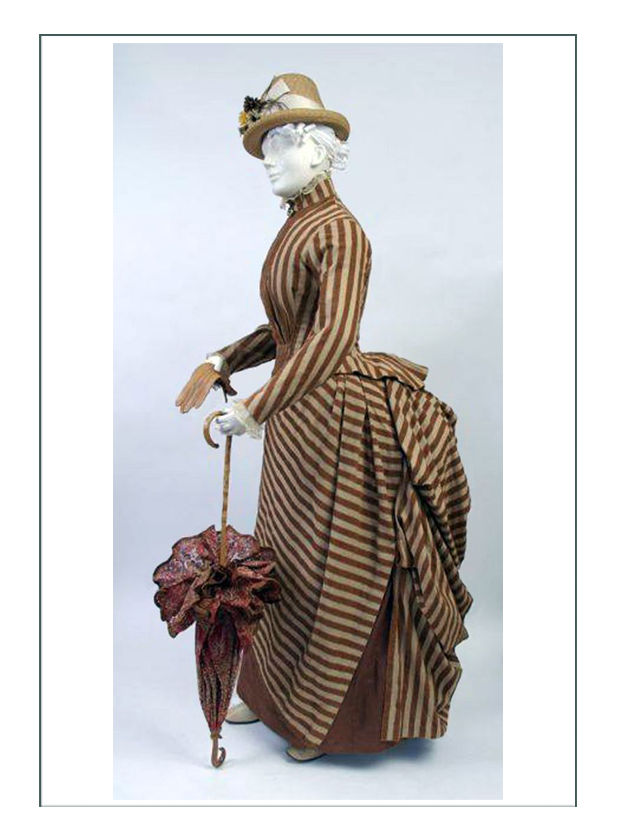
—— (below) “Wagon Train Open Robe 1875” ——
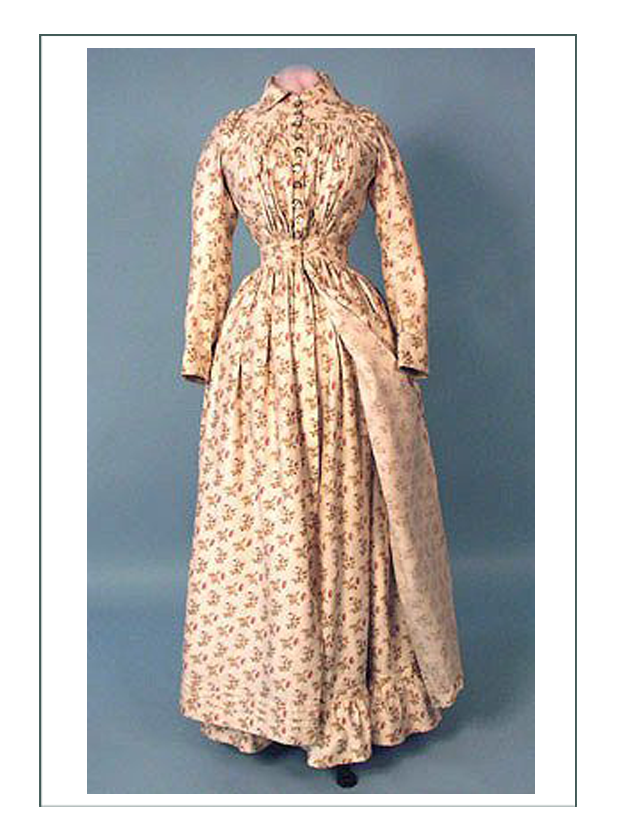
—— (below) “Small Bustle Town Dress 1881” ——
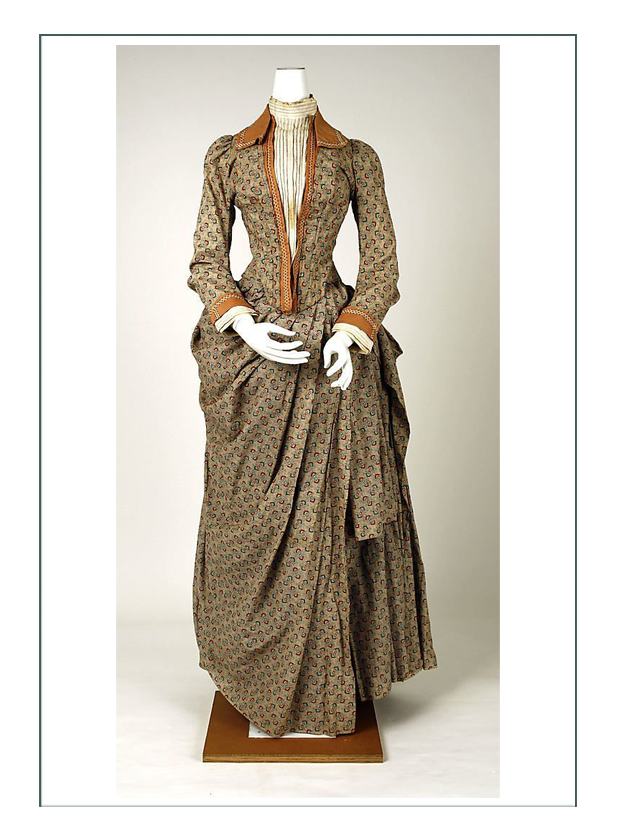
—— (below) “Working Ranch Women 1885” ——
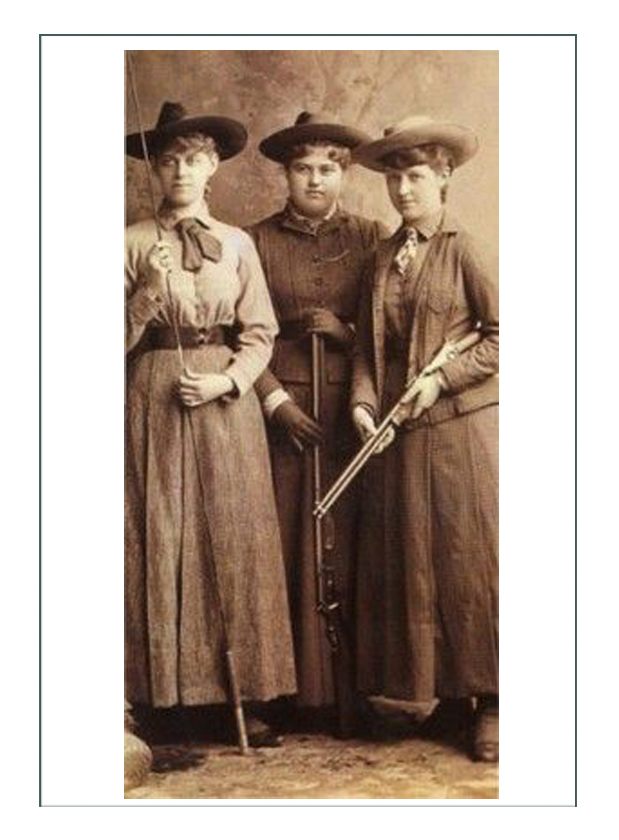
—— (below) “Pioneer Dress Up w Pseudo Bustle 1887” ——
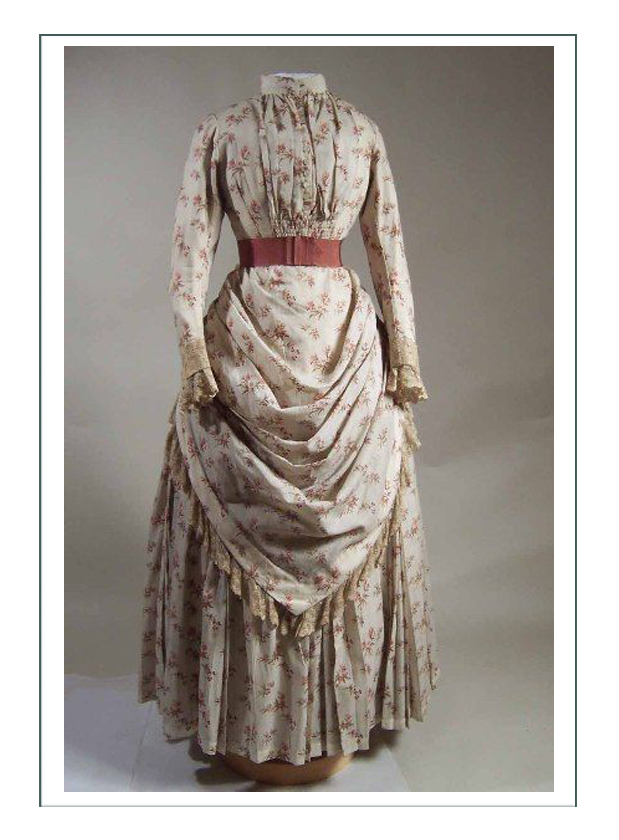
—— (below) “High Fashion Summer Dresses & Guns 1890” ——
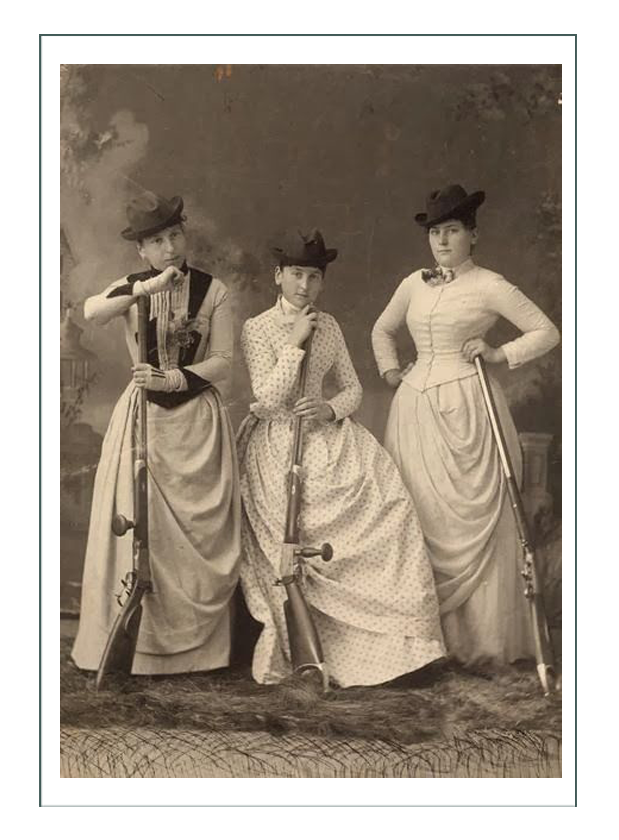
Click to go to Suzi’s History of Time and Place page
Click to go to Suzi’s Design Development page (next)
